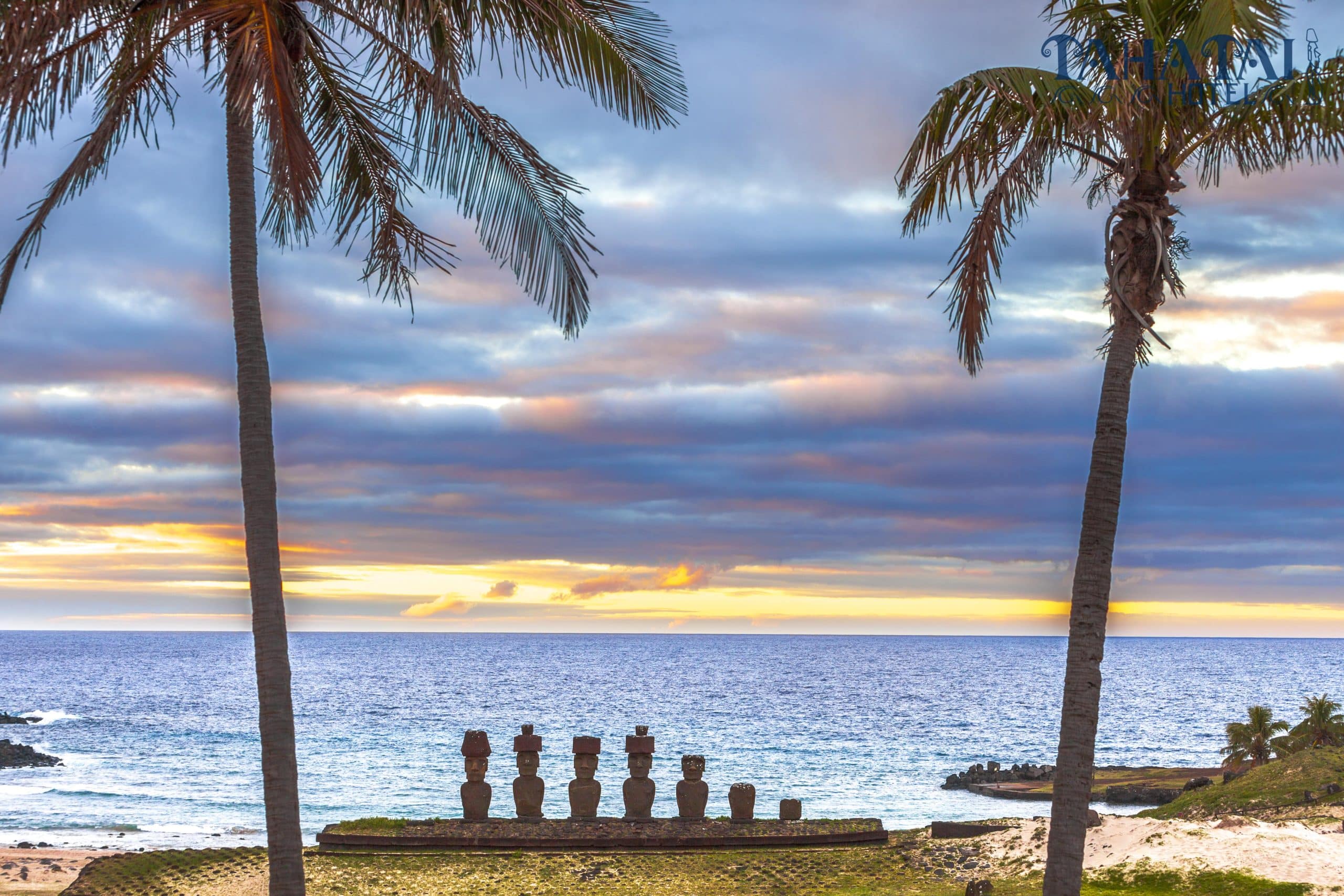
There are places on the planet that whisper stories of lost civilizations, of human ingenuity, and of a deep connection to the earth. Rapa Nui, with its enigmatic stone guardians, is one of them. The moai, with their perpetual gaze towards the island’s interior, are the echo of a unique culture that flourished in the most isolated place in the world.
But how did this small island in the middle of the Pacific go from being a remote mystery to being recognized as an invaluable heritage for all of humanity?
A Legacy Sculpted in Stone
The history of Rapa Nui is one of astonishing resilience and creativity. Its ancient inhabitants, guided to the island by the stars, developed a complex and original culture, completely isolated from the rest of the world. The most powerful testimony to their legacy is, without a doubt, the moai. These gigantic monolithic statues, carved from the quarry of the Rano Raraku volcano and transported across the island, represent an unparalleled cultural mystery.
The island’s heritage extends even further. It includes the ahu (ceremonial platforms on which the moai rest), villages like Orongo—the center of the fascinating Birdman cult (Tangata Manu)—and countless petroglyphs that narrate the cosmology and history of their ancestors. This monumental collection, scattered across a landscape of volcanoes and rugged coastlines, is what makes it a truly exceptional place.
The Path to World Recognition
The world began to recognize the fragility and importance of this legacy during the 20th century. Expeditions and research, like that of the famous Thor Heyerdahl, put Rapa Nui on the global map, not just as an exotic destination, but as a place of immense archaeological and cultural value.
The definitive step came in December 1995. After an exhaustive evaluation, UNESCO decided to inscribe Rapa Nui National Park on the World Heritage List.
The reason: Rapa Nui offers a “unique testimony to a cultural tradition or to a civilization which is living or which has disappeared.” UNESCO recognized that the island’s statues and sanctuaries were not just works of art, but the manifestation of a unique cultural phenomenon in Polynesia, born from complete isolation. This designation is a global commitment to protect and preserve the island for future generations, ensuring that the spirit of the ancient clans never fades.
Live the History, Feel the Spirit of the Island
Today, traveling to Rapa Nui is much more than a vacation. It is a pilgrimage to an open-air museum, an opportunity to connect with a history that is still alive in its people, language, and traditions. It is walking the same paths as the ancient builders, feeling the Pacific breeze, and marveling at the sunset behind the ahu.
To live this experience in an authentic way, your home on the island should live up to its traditional spirit.
Hotel Taha Tai: Your Home in the Navel of the World
At Hotel Taha Tai, we know that the magic of Rapa Nui lies in its people and its tradition. Located in a privileged spot facing the sea, our hotel is a place to rest and a gateway to the local culture.
Our name, which means “next to the sea,” reflects our connection to the environment. Here, Rapa Nui hospitality is a way of life. From the island-inspired architecture to the flavors of our cuisine, every detail is designed for you to immerse yourself in the unique atmosphere of this place.
We invite you to wake up to the sound of the waves, to plan your day of exploring moai and volcanoes from our comfortable terrace, and to end the day gazing at the stars just as the ancient Polynesian navigators did.
Rapa Nui is a legacy for the world. Allow us to share it with you.
Live the experience of a World Heritage Site. Book your stay at www.HotelTahaTai.cl and let the spirit of the island embrace you.
Iorana!
